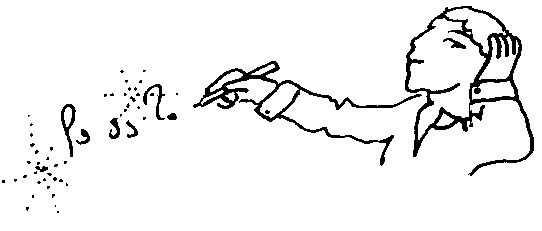
Word Wizard's
Wander
Tasty Themes & Morals
Themes
and morals, all stories have one, don't they sound dull? But they are
the guide rails of a story. and from them, you can build a whole realm.
Some writers even tell you the theme or moral by placing a quotation in the
front of the book.
"A mirror is empty
Till a man rides through."
(words by John Myers Myers in
"A Man Rides Through" by Stephen Donaldson.
"Night hovers all day in the boughs of the fir tree."
(words by Ralph Waldo Emerson, in "Memory & Dream" by Charles De Lint)
"A ragged colt may prove a good horse."
(A Cockney proverb, in "New Moon" by Midori Snyder
Choosing a decent theme, gives a story scope; a decent moral, depth.
How so?
Starting with theme.
In many fantasy stories, the theme is: good is stronger than evil. The writer
is confirming his or her belief--or hope--that good will indeed triumph over
evil.
One good over evil theme, where good is symbolized by light and evil by dark,
is: It only takes one candle to lift the darkness. Another story might take
several well-aimed spotlights to lift the same darkness; another, a string of
holiday lights; another, an aurora borealis, or a rainbow.
Each choice shows the author's belief--or belief for the current story--in how
hard it is to get rid of evil, in this case symbolized by darkness.
How does this make story?
The theme and moral act as a hurdle that your character has to come to terms
with. Turning this around: theme and moral establish the hurdle your story
requires your main character to leap in order to get to story's end where the
quest object resides.
Since morals and themes on their own aren't especially exciting reading, you
cover them with a tasty story. This involves illustrating them with interesting
symbolic representations. In other word: your character discovers the theme and
moral which you, storyfully, disguise as people, objects, or situations to be
the truth needed to continue on to story's end. Thus, the hurdle might appear
in your story as conflict with a villain, a crisis of character, or a
confrontation with a prop (such as a mountain, bear, or telephone).
To illustrate, using the single candle theme: This theme translates into one
person, who may be shy, mild-natured, non-hero type but, with the wattage of a
single candle, she lights the darkness around her. There is probably no
sweeping war to accomplish this, just one person doing what she feels is right
and good, changing the world for the better. This story leaves the reader with
a possible moral of: one person can make a difference. This moral defines the
depth of the story: one hero, one difference needed to be made.
In the second theme choice, it takes several spotlights: blatant heroes who
shine a bit larger than life. The more light, the larger and blacker the
darkness is going to seem. In this story, the darkness is given more emphasis,
more scope, so probably actively involves a country or two or the whole world.
Here is the moral that comes to me at this point: Whatever one fights becomes
stronger. A candle doesn't fight, it just shines. A spotlight fights, it sweeps
the darkness aggressively; the darkness feels threatened, it fights back. So, in this second story, a sweeping war wouldn't be amiss.
An aurora borealis, on the other hand, is a natural phenomena, such as a plain
person learning to shine with colors, like an artist who dances at first for
his own enjoyment, then for others and, in the movement of his dances, begins
to change lives around him. The darkness finds itself lit because it wandered
in to watch the dancer. It may be irritated to be less dark, but the
interaction was mutual. The darkness's way to fight back is proscribed: it has
to stop the dancer from pulling in more colors, more emotion, spreading more
color and light in the world. So it tries to make the dancer feel bad, or doubt
himself. Which won't work because the aurora borealis is a natural growth of
the inner dance-self, and, even if the darkness manages to kill the dancer, it
doesn't win because the colors have spread to others and there is a whole
troupe of aurora borealis dancers now in the world.
So the darkness tries a new track, it tries to seduce the dancers, because sometimes one needs a bit of darkness to make sharp edges or to rest in. (Notice, the definition of darkness, the moment it tries to seduce (using the dancer's tools, more or less), is changing. Therefore it is changing.)
And the moral is that darkness can't help but be lifted by light.
So, you can see, choosing the theme and moral of a story is not only organic, in that one grows from and upon the other, but they establish the depth and scope, amount of characters needed, the guide rails of the story.
So, I will leave you with a theme-quotation for your writing:
"I think of Edison asleep in his laboratory. He gave the world a light bulb.
What is your light bulb to give the world?"
(words by Reed)
"Tasty Themes & Morals" copyright Sara Ryan, previously
printed in "Expressions"
Index
-
Tasty Theme & Morals

Writing is like driving sheep down the road. If there is any gate to the left or right, the reader will most certainly go through it.
(C. S. Lewis)

If you would like to contribute to the "Word Wizard's Wander", email your article to: thetiger@tigermoonpress.com. Articles or short poems on writing only. Put the article in the body of the email, use a sensible subject line so it doesn't get treated a spam. Currently payment is a note card or something comparable.

